Streams of visitors from home and abroad, have for centuries gazed upon the awesome wonder of the Taj Mahal, this grand Mughal ‘monument of love’. Few there are amongst them who will turn away without recalling that this ‘teardrop on the cheek of time’ is a timeless embodiment of the great love of Emperor Shahjehan, for his beloved wife, Mumtaz Mahal. The building of this grand mausoleum was truly a labour of love for the Mughal monarch.
Though we all know it as the Taj Mahal, Shahjehan named the tomb ‘Rauza-i-munnavvra’, or the ‘Illumined Tomb’. While gazing upon the shimmering pearly marble edifice in the soft moonlight of a full moon night, the great Mughal must surely have been inspired to name it thus. There’s no doubt that many of us privileged enough to see its sublime beauty while bathed in moonlight would be in total accord with him naming it so.
The cultural expressions of Shahjehan are well reflected in the Taj Mahal. He was a man who valued perfection and symmetry as much as he did consummate craftsmanship. It shouldn’t surprise us that it took over 16 years from the start (in 1632) to finish, to achieve those goals. You see this, not only in the symmetrical beauty of its architecture but also in the uninhibited splendour of the refined inlays and myriad surface details.
Those embellishments and ornamentations would enhance, what in reality was a very austere, deceptively simple structure. Money was of no consequence in bringing this grand plan of perfection to completion for the last resting place of his beloved Mumtaz. Architects, designers, jewellers, goldsmiths, and artisans of every hue were in his employ—yet that did not stop Shahjehan from searching abroad for materials and talents to create this dream tomb.
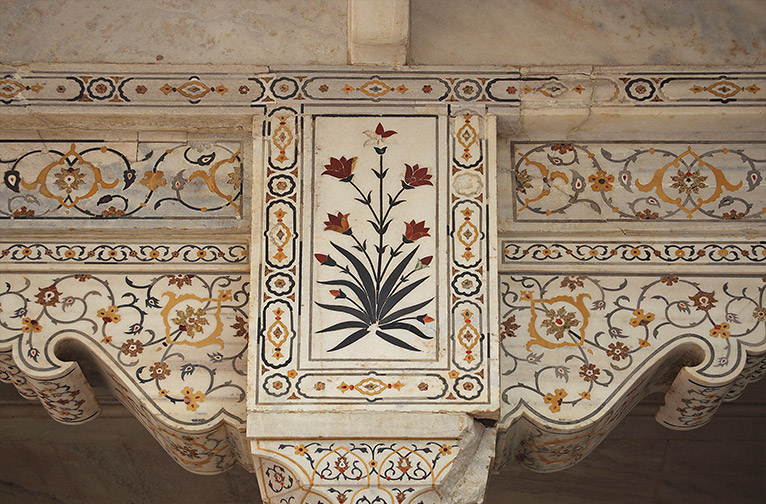
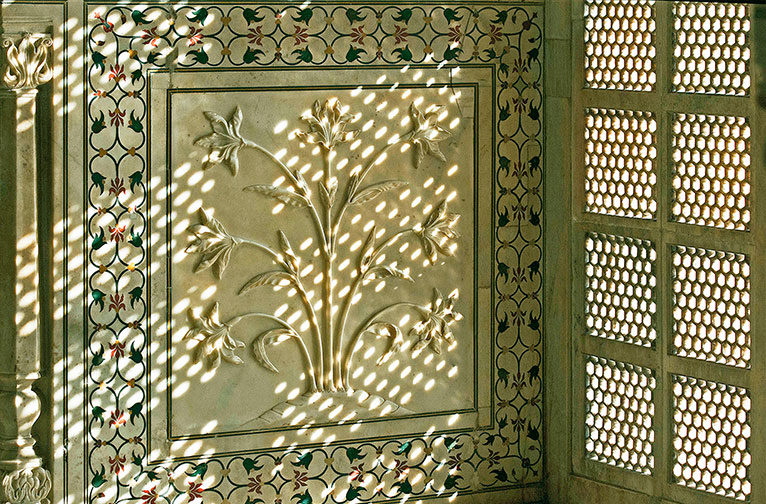
A king who was known for his love of luxuries he was also a great connoisseur of the arts and all things of beauty; little wonder he was obsessed with even the smallest details to create a thing of such beauty and perfection. The restrained beauty of the pearly white of the tomb is extensively embellished with Koranic inscriptions, reflected on the inset calligraphy, both in Arabic and Persian. The calligraphy served not only as a decorative function but also to instruct visitors. Amanat Khan, a renowned Persian calligrapher of the times, was tasked by the emperor to undertake the calligraphy work on the Taj. Amanat Khan has, exclusively, been allowed by the Mughal to sign his work in two places—An inscription above the south arch on the interior of the tomb dated 1635/36 (Islamic calendar-1045), and the other one can be found at the bottom of the same interior arch dated 1638/39 (Islamic calendar -1048). Look out for the prominent calligraphic panels of black marble that frame the iwans on the facades of the tomb.
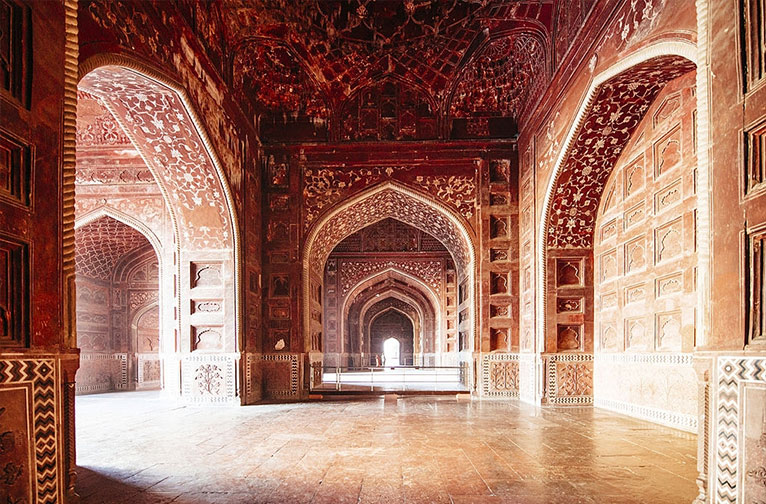
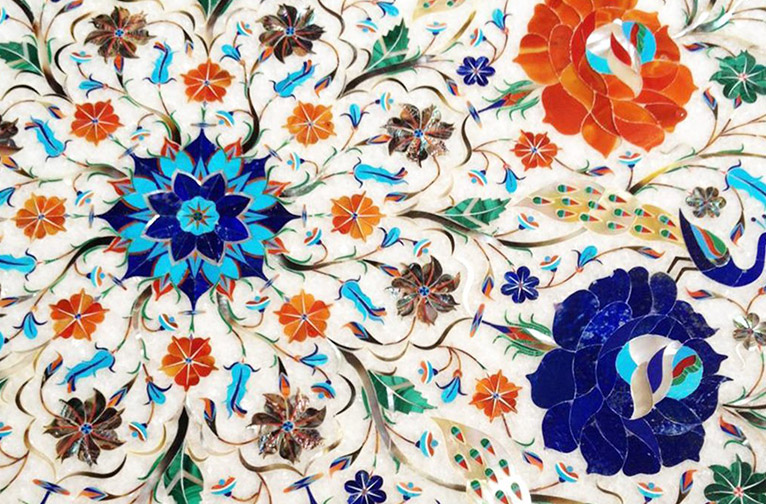
An unmissable feature of the decorative aspects of the Taj is the fine execution of intricate inlay work, dominated by floral themes. These are rendered in a fantastic array of precious gemstones and coloured stones in the marble facade. The inlay work was done by artisans of high calibre in the interiors and the exteriors of the tomb. Forty varieties of gems were worked into the marble edifice, many of which were sourced from Asia via the ancient Silk Route on which caravans loaded with their precious goods would set off from China. From Tibet to Afghanistan, from Arabia to the Red Sea, from Burma to Russia, and from Egypt to Ceylon, there was no dearth of sources for the precious stones that would ornament this great tomb.
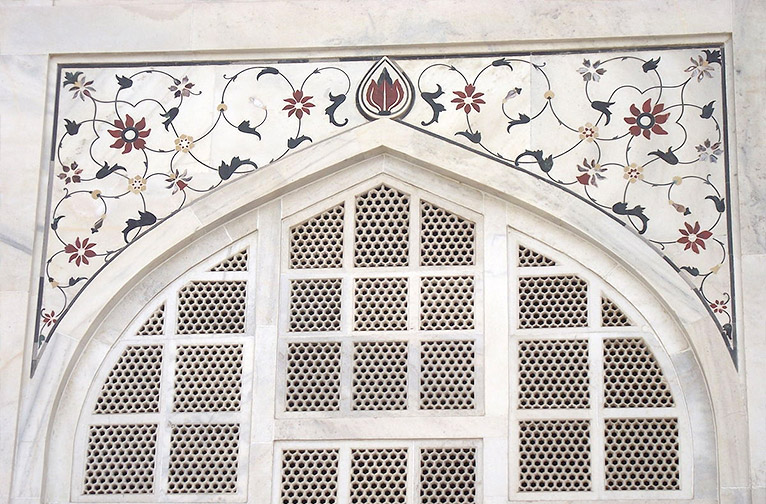
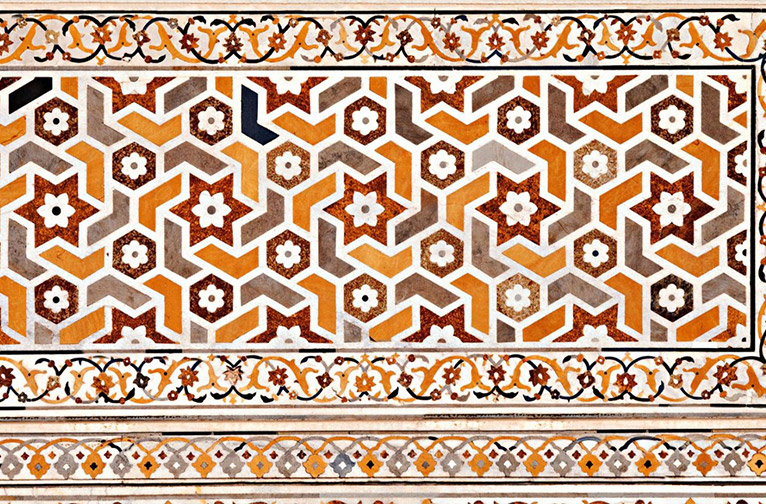
Though there’s always been much talk about the Italian influence in the hard stone inlay technique or pietra dura, not many people are aware that Indian artisans were familiar with it as panchi kari/pachi kura technique of stone inlay, popular at the time for calligraphy and ornamentation. It appears the influence of pietra dura is fused into the local panchi kari with the incorporation of hard semi-precious stones used in the Taj. Look out for the inlay of semi-precious stones in white marble decorated with floral arabesque patterns of stalk, leaf, and flower above a lattice screen. The traveler should definitely make time to visit the artisans in Agra who to this day are skilled in the practice of this delicate art in the labyrinthine lanes of Agra and Fatehpur Sikri.
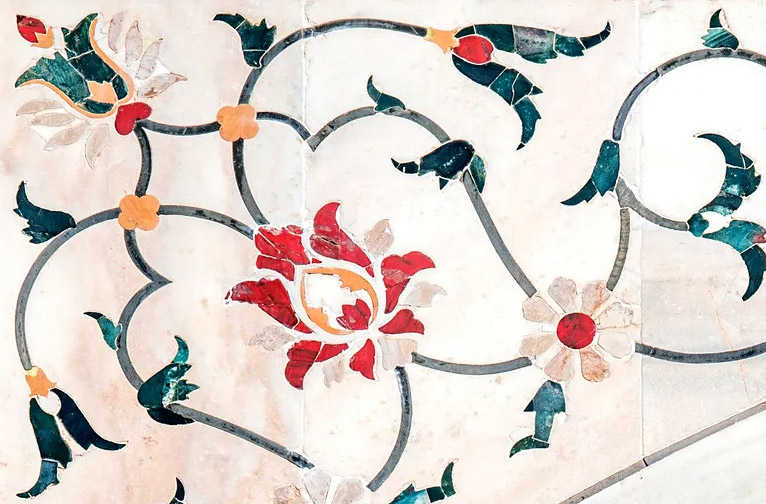
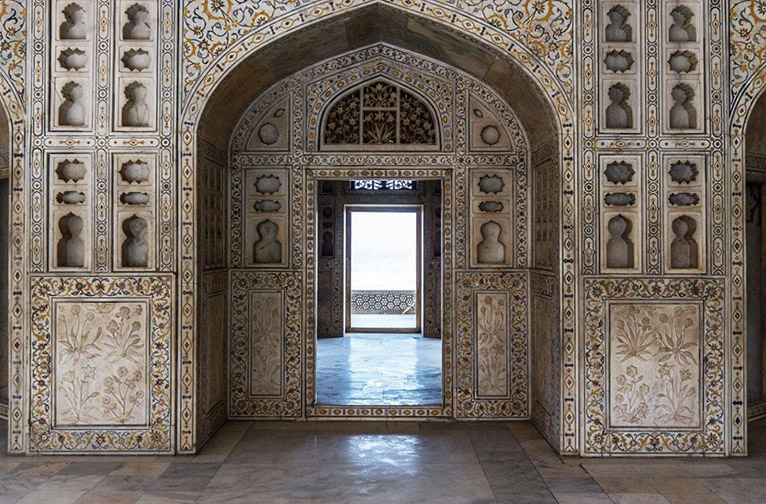
Carved relief work, known as manabbat kari in India, is another beautiful addition to the ornamentation of the Taj. Check out the wall panels with their intricately carved flowers and foliage. Unmissable features are the exquisite marble lattice screen (jali work) at the entrance to the tomb and the geometric patterns (girih-bandi) on the flooring.
Next time you are visiting the Taj keep your eyes peeled for the fabulous array of architectural and ornamental details. They will blow you away. The marvel is that time has not dimmed their beauty one iota.